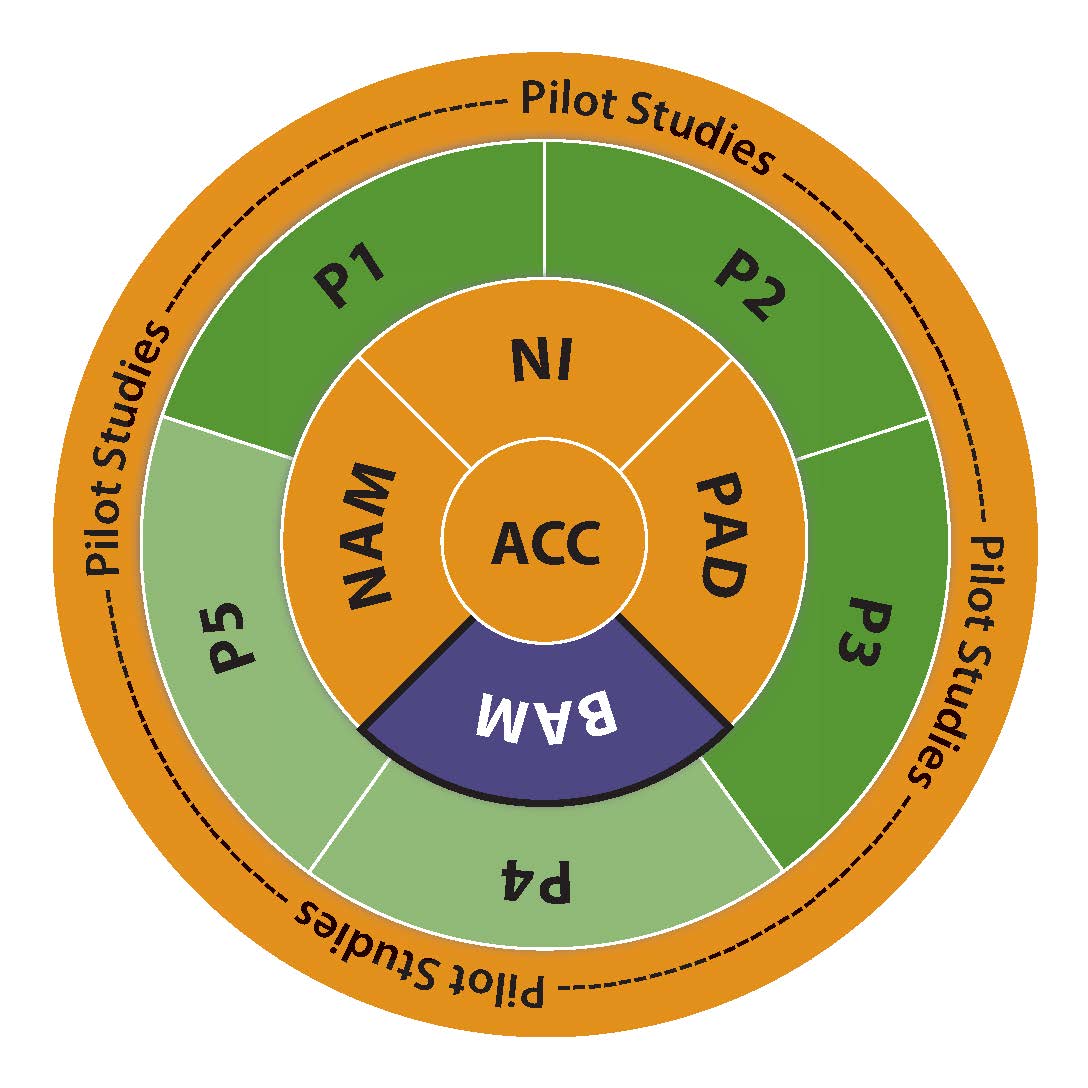Behavioral Assessment and Medical (BAM) Core
Core Co-Directors: Robert Heaton, Ph.D.; Scott Letendre, M.D.
Co-Investigators: Ronald Ellis, M.D., Ph.D.; Sanjay R. Mehta, M.D.; J. Hampton Atkinson, M.D.; Thomas Marcotte, Ph.D.; Erin Morgan, Ph.D.

Summary:
The BAM Core is a new component of the competing TMARC renewal that merges the Clinical Assessment and Laboratory (CAL) and Neuropsychiatric (NP) Cores from the prior funding period in order to improve resource efficiency.
Now comprised of the Neuromedical and Laboratory Unit (NLU) and the Neuropsychiatric Unit (NPU), the BAM Core extensively contributes to Center objectives by providing to TMARC Projects and Scientific Cores:
1) Comprehensive neuromedical and neurobehavioral characterization of human participants
2) Specimen collection and management
3) Collaboration and training regarding the analyses and interpretation of neuromedical, laboratory, and neurobehavioral data
Standardized neuromedical assessments focus on aspects of health affected by HIV disease, METH use, and aging, including participants’ medical and treatment history, neurological functioning, HIV disease staging, and medical comorbidity status (e.g., VACS Index, frailty). Laboratory assessments include tests for co-infections, clinical lab assays (e.g., hepatic transaminases, hemoglobin), and soluble and cellular biomarkers in cerebrospinal fluid (CSF) and blood that reflect HIV replication, vascular injury, immune functioning, and oxidative stress. New measures of biologic aging (cell senescence (telomere shortening) and mitochondrial aging (mtDNA injury)) have been added in support of TMARC’s aging theme. The NLU also will provide assays for TMARC’s animal projects and support for TMARC’s Pilot Study on cell senescence. The NPU provides comprehensive neurobehavioral evaluations that will assess neurocognitive abilities, complex frontal systems behaviors (impulsivity/disinhibition, sensation-seeking, and apathy), and comorbid psychiatric conditions (mood, Attention-Deficit/Hyperactivity Disorder (ADHD), Antisocial Personality Disorder (ASPD), and substance use disorders). The NPU also provides data regarding key health-related and everyday functioning outcomes such as antiretroviral therapy (ART) adherence, risky behaviors (unsafe sex, drug use, driving), performance-based instrumental activities of daily living (IADL) assessments, independence in real-world functioning (e.g., instrumental activities of daily living (IADL), employment, health role functioning), and psychosocial functioning (social and emotional functioning, quality of life). Lastly, the NPU also provides support for TMARC’s Pilot Study examining the utility of novel, computerized and virtual reality-based tasks to assess the everyday impact of neurobehavioral impairments due to METH, HIV, and aging.
Relevance:
The BAM Core is central to TMARC’s major scientific aim of understanding the CNS consequences of METH and HIV within the context of aging. BAM Core data will enable studies investigating the pathogenesis and functional consequences of HIV and METH that may lead to more targeted interventions for reducing the public health impact of these increasingly prevalent conditions across the lifespan.
